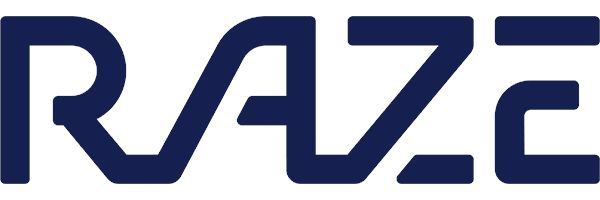-
Hong Kong SAR
Copyright © 2025 Powered by BCI Media Group Pty Ltd
Confirm Submission
Are you sure want to adding all Products to your Library?
Contact Detail

Here at RAZE, we can’t stress this enough.
Traditional disinfectants haven’t changed in years. The way we clean, disinfect and treat our surroundings is critically outdated. RAZE wants you to start thinking ahead — perhaps that’s only until the next Friday, month, or season. We sent a man to the moon; surely we can innovate a way to sustain a standard of effective and long-lasting hygiene.
Photocatalysis is not a new technology. Initially pioneered for industrial hydrogen production that is still pertinent today, its technology was still far from being adapted for household use.
Photocatalysis, referring to the process by which it occurs, works very similar to photosynthesis. A photocatalyst is a semi-conductor, like silicon, and key to the formation of highly reactive chemicals. In this case, the photocatalyst used is titanium dioxide, otherwise known as TiO2. Titanium dioxide is the most commonly used photocatalyst, and can be found in most products due to its non-dangerous state (under European regulations). This volatile formation has the ability to convert even harmful compounds in the atmosphere into harmless carbon dioxide and water. During this reaction, the photocatalyst remains unaffected in consumption or alteration, meaning it maintains a sustainable cycle.
For photocatalysis to be effective, light is crucial, and a coating for the reaction of light to take place. Traditional photocatalyst coatings were well, unfortunately… not sticky at all. This is why photocatalyst + household cleaning = utter failure of a combination.
And while all that was happening, it took our RAZE scientists a decade of R&D to formulate this new standard of hygiene we’re talking about now. This time, we added nanotechnology to the mix, thanks to a forefront of innovation.
Game changer.
Our nanoparticle star, WO3, is a long chain that acts like a longer-lasting battery with reserve power. It has the ability to work up to 8 hours in the dark. Also known as tungsten trioxide, it is a light-responsive photocatalyst that can be kept at low cost, is harmless, and stable in acidic and oxidative conditions.
With the incorporation of BioBr for Raze Inside, our commercial service, businesses are able to withstand a coating durability twice as long as our WO3. Its bigger flower-like structure grabs onto the surface allowing for easier adhesion. This type of clinging bond is hence why our professional service allows up to 6 months of protection, rather than 3 months assured in our household sprays. We get a lot of questions about our Raze Inside service and Raze Home product line: this is why.
Prevention is key.
We know what it means, but how often do we really practice it? We live in a world where we are used to facing off challenges and racing for solutions. But what if we looked closer at prevention?
COVID-19 hasn’t been easy. An illogical fallacy would be that the deadlier the virus, the stronger the stakes for disinfection would be. Disinfection is simple, but we tend to complicate it. The current pandemic rocked a dramatically politicised society, and the repercussions have been devastating. Lost in this all are the 1-million-and-exceeding deaths that as frustratingly as it sounds, easily stood a chance against hygiene measures and personal hygiene protection.
We now know the crucial role of personal hygiene in the pandemic. The coronavirus is only about 200–300 nano-metres in size. It’s extremely small, yet it has managed to creep up onto over 36 million people, and across every corner of the world. Given that the coronavirus can be effectively eliminated with soap and water, alcohol, or bleach — the amount of people still practicing poor hygiene and preaching rumours of inaccurate hygiene is shocking.
The rapid-evolving pandemic is predominantly a materialisation of a bigger issue at stake: hygiene is out-of-date, especially when it comes to prevention.
Hygiene is out-of-date and it’s time to do things differently. It needs to be more sustainable. There needs to be more emphasis on user-friendliness. A lot of it isn’t even safe to use around pets and children. We’ve been confronted by a deadly pandemic that is still ongoing. But before 2020, more than 850,000 people die every year from lack of access to clean water, sanitation and hygiene. 4.5 billion people in this world today are still left without access.
Remember when we mentioned that hygiene is uncomplicated? It’s not difficult, and it should never be.
Hygiene is the best way to prevent disease, not only against COVID-19, but when so many people are unable to practice good hygiene, it becomes an issue. This is why here at RAZE, we want to emphasise the simplicity of hygiene and remind us all that sanitation shouldn’t be overwhelming. Hygiene should be inclusive and accessible across all households alike.
Optimising photocatalyst technology in household hygiene is not anything pioneering or groundbreaking, but it’s the undeniably simple solution we’d like to put on the table. Embracing a new technology is hard. Breaking away from traditional cleaning standards won’t be easy. But from looking at the state of recent affairs, it seems necessary. Sometimes, prevention is the only option.
Hygiene is the best prevention, and prevention is key.



